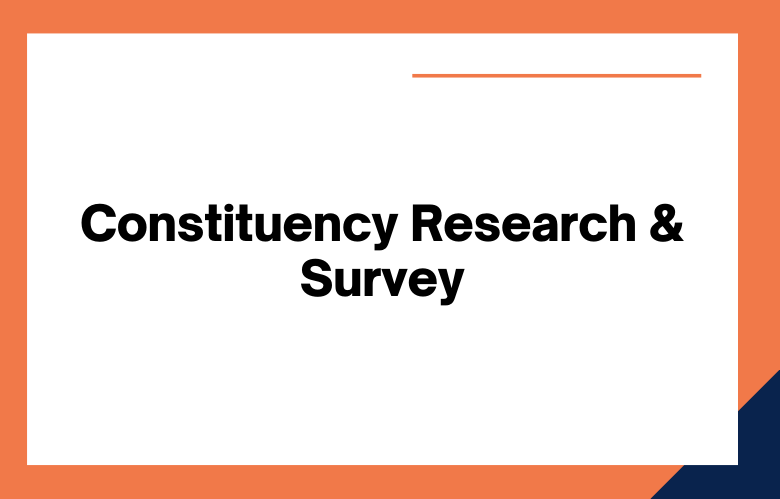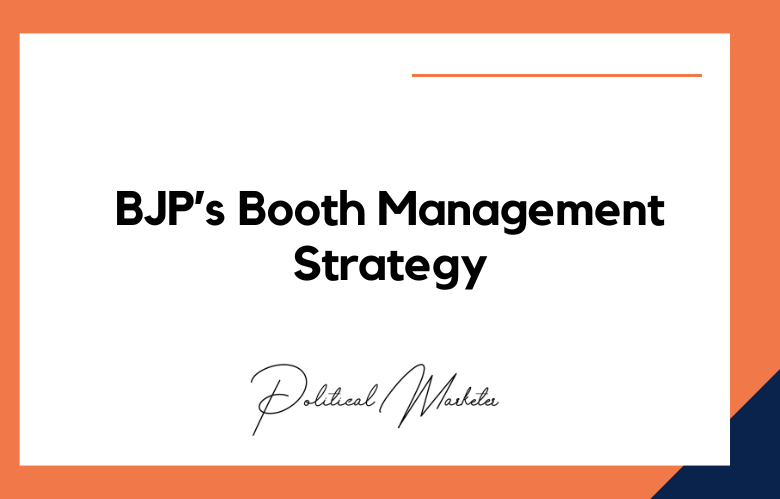All candidates running for political office want to know how to target their ideal voters. And the best way is to conduct constituency research and survey. It helps you identify your supporters and understand what issues matter most to them. By understanding your voters, you can focus your campaign message on the key concerns that matter most to them – and win their votes!
Read on for more tips on how to conduct constituency research and survey. Like most political campaigners, you’re looking for ways to laser-target your ideal voters and put your message before them. One great way is by constituency research and survey.
This research provides a detailed look at the demographics, opinions, and issues important to specific voter groups within your riding or state. Armed with this information, you can craft highly targeted messages that speak directly to the concerns of these voters. So how do you go about conducting constituency research and survey?
What is constituency research, and why do you need it for your campaign
Constituency research is the process of determining which subgroups of voters are most important to your campaign. This information can help you target the campaign messages and activities to groups most likely to support your candidacy.
There is a lot to launch a successful campaign. It would be best to understand your constituency clearly and what they’re looking for in a candidate. It is where constituency research comes in.
Constituency research is all about understanding the demographics of your voters and their issues care. The information is essential for crafting a compelling campaign message that resonates with voters.
So if you’re wondering why you need constituency research for your next campaign, now you know!
Constituency research is critical for any campaign. Without understanding the demographics of the voters in a given area, it’s impossible to tailor a message that will resonate. This data can help inform strategies for voter outreach and get-out-the-vote efforts.
Constituency research studies to understand their needs and concerns. This type of research help informs campaign strategy and messaging. It can also help identify potential voters and understand what issues are most important to them. Constituency research is an essential tool for any political campaign that wants to be successful.
What is constituency research?
Constituency research helps campaign managers, and candidates learn about the people they want to represent. It can provide information about voting behaviors, demographics, and economic indicators.
Why do you need it for your campaign?
Running a successful campaign requires a deep understanding of the people you hope to win support. Conducting constituency research is essential to tailoring your message and securing votes.
How to use survey data to laser target your ideal voters
Surveys can provide valuable insights into who your superior voters are. By understanding your target audience’s demographics, preferences, and opinions, you can laser-focus your efforts on winning them over.
Survey data can be a powerful tool for targeting ideal voters. By understanding the preferences and opinions of different groups of people, you can craft messages that are more likely to resonate with them. It, in turn, leads to more conversions and support for your campaign.
Surveys can provide invaluable insights into who your ideal voters are. By understanding your target voters’ demographics, interests, and motivations, you can reach and persuade them more effectively. Additionally, surveying can help you learn about the concerns and issues that matter most to them. This knowledge can craft targeted messages that resonate with your audience and motivate them to support your campaign.
Survey data is used to laser target your ideal voters. This information can help you focus your campaigns and messaging on the right people, leading to more poll success.
The different types of surveys that are available to you
There are many different types of surveys available to you. You can choose from online, phone, mail-in, and more surveys. Each type of survey has advantages and disadvantages, so choosing the right one for your needs is essential. With the proper study, you can get valuable feedback that will help you improve your business or product.
Many different types of surveys are available to consumers in today’s market. Here is a brief overview of some of the most popular types of surveys:
Product Surveys:
Companies often use surveys to gather feedback about a new product or service. Product surveys are typically short and focused on a specific issue.
Customer Satisfaction Surveys:
Customer satisfaction surveys gauge customer satisfaction with a company’s products or services. These types of surveys are usually longer and more comprehensive than product surveys.
Employee Satisfaction Surveys:
Employee satisfaction surveys measure employee satisfaction with their job and working conditions. These surveys usually include job satisfaction, pay and benefits, and communication with management.
How to create a survey that will give you the information you need
There are many ways to collect information from people. One method is to complete a survey. You collect the data you need to make informed decisions by asking the right questions.
Creating an effective survey takes some planning. First, decide what information to collect. Then, it would help if you crafted questions to elicit that information. Once you have your questions, you must test your survey with a few people before sending it out to a larger group.
With careful thought and planning, create a survey with the necessary information.
If you’re looking to create a survey that will give you the information you need, there are a few things you’ll need to keep in mind. First, decide what kind of information you’re looking to collect. Are you trying to gauge customer satisfaction? Try to get feedback on a new product. Once you know what information you need, start creating some questions.
Ensure the questions are clear and concise and avoid unnecessarily confusing. You’ll also want to ensure that your questions are relevant to the topic. If you’re trying to collect feedback on a new product, there’s no need to ask about customer satisfaction.
Tips for distributing your survey and gathering responses
- Choose the proper survey distribution method for your needs
- Make sure your survey questions are clear and concise
- Create a strong incentive for people to respond to your survey
- Send reminders to people who haven’t responded yet
- Analyze your survey results
- Make sure your survey is well-designed and easy to understand
- Send the survey to a diverse group of people for the best results
- Promote the study through social media, email, or word-of-mouth
- Follow up with respondents who have not yet completed the survey
- Analyze the data collected and draw conclusions
- When creating your survey, be clear about what you want to learn from respondents.
- Keep the survey questions short and simple
- Make sure the questions are relevant to your research goals
- Test the survey on a small group of people before sending it out to a larger audience
- Send the survey to people who are most likely to have an opinion on the topic you’re researching
- Remind people several times that they can still participate in the survey even if they’ve already done so
- Analyze and interpret the data correctly
- Make sure your survey is well-designed and easy to understand
- Send the survey to a targeted audience who will be interested in the topic
- Use an email distribution service to send the survey to a large number of people
- Incentivize people to take the survey by offering a prize or gift card for completing it
- Follow up with non-respondents after a few days to encourage them to participate
- Analyze the results of the study and share them with your audience
- Make sure your survey is well-designed and easy to understand
- Send the survey to a relevant audience
- Use an appropriate distribution method
- Promote the study through social media and other channels
- Make sure your survey is well-designed and easy to understand
- Send the survey to a targeted audience
- Incentivize respondents by offering a prize or discount
- Use social media to promote your survey
- Follow up with non-respondents after a reasonable amount of time has passed.
- Choose the proper survey distribution method for your needs
- Create a professional-looking survey
- Write clear and concise questions
- Incentivize respondents with rewards or discounts
- Keep track of who has responded to your survey and follow up with them
- Decide who your target audience is
- Choose the proper survey distribution method for your target audience
- Send out a test survey to make sure everything is working correctly
- Make sure your questions are straightforward to understand
- Keep track of who has and hasn’t responded to your survey
- Thank respondents for their time
How to analyze and interpret your survey results
Your survey results are in; now what? Here are some tips on analyzing and interpreting your survey results to maximize your collected feedback.
First, look at the big picture. What trends do you follow in the data? Are there any glaring outliers that you need to take into account?
Next, dig deeper into the details. It is where you’ll start looking at individual responses and identifying patterns. Are there specific questions about people struggling? Are there common themes emerging in the comments section?
Finally, put it all together and decide what action to take.
First, consider what you want to learn from the survey to analyze and interpret your results. What are your goals? What information do you hope to collect? Have a clear idea now; look at your results and see if they match your goals. If not, why not? Identify the patterns or clusters in the data that help you better understand the consequences—brainstorm ways to improve your survey methodology next time.
Conclusion
Political constituency research and surveys are among the most important but often overlooked aspects of running for office. By understanding your constituents’ needs, you can laser-target your campaigning to ensure you speak directly to those who vote for you. We specialize in helping candidates do just that.
Contact us to learn more about our political survey consulting services – we would be happy to help you win over the hearts and minds of your voters!
One way to get in touch is by filling out our online form on this site or give us a call at
+91 9848321284. Let’s work together today!











